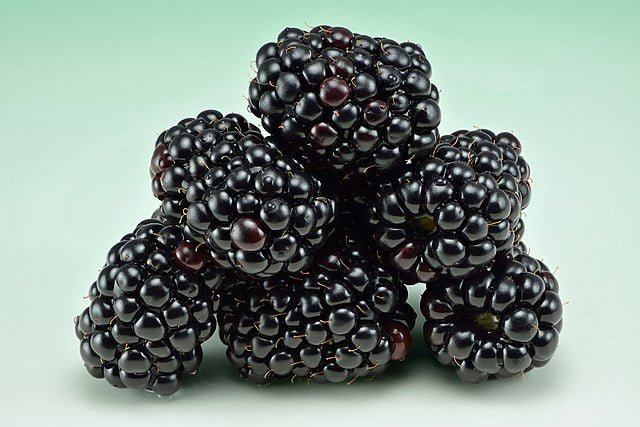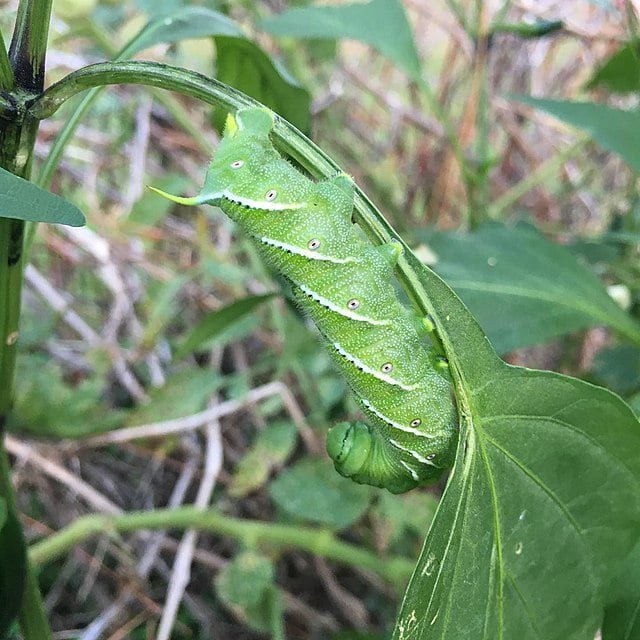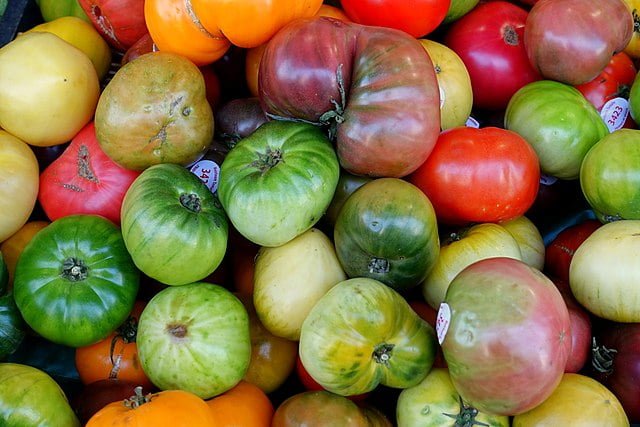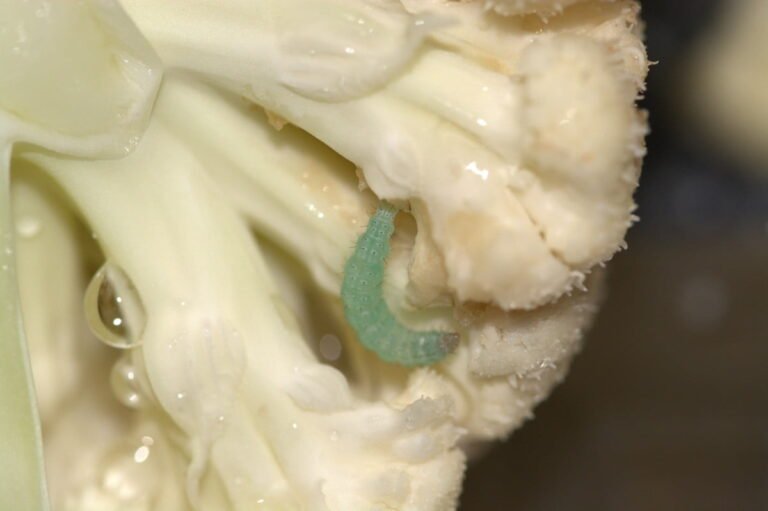Growing Blackberries: A Guide to Cultivating Sweet and Juicy Berries
Blackberries are delicious and nutritious berries that can be enjoyed fresh, in jams, or in various baked goods. Growing your own blackberries allows you to indulge in the sweetness and juiciness of these berries straight from your garden. This guide will provide you with simple steps to successfully cultivate blackberries and enjoy a bountiful harvest.
Growing Blackberries
Selecting Blackberry Varieties
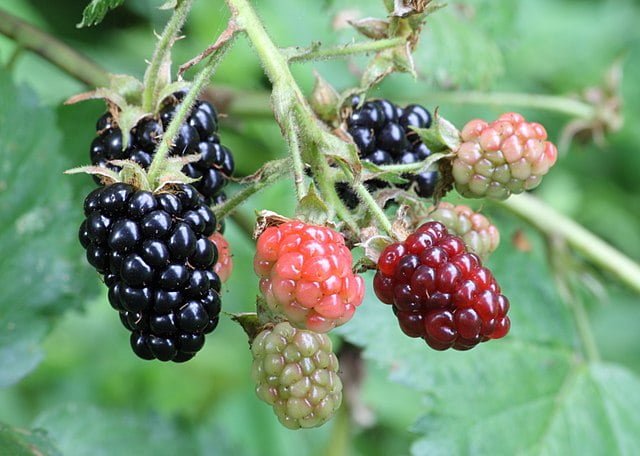
Blackberries come in different varieties, including thorny and thornless types. Choose blackberry varieties that are well-suited to your climate and growing conditions. Popular thorny varieties include ‘Chester’ and ‘Triple Crown,’ while common thornless varieties include ‘Apache’ and ‘Natchez.’ Consider factors such as fruit size, flavour, and growth habit when selecting the right variety for your garden.
Choosing the Planting Location
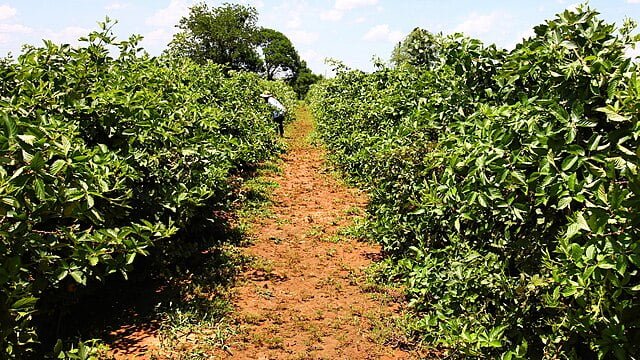
Blackberries thrive in full sun and prefer a location with well-draining soil. Select a spot in your garden that receives at least 6-8 hours of direct sunlight daily. Ensure the soil is fertile, rich in organic matter, and has a pH level between 5.5 and 7.0. If your soil is heavy or clay-like, amend it with compost or well-rotted manure to improve drainage and nutrient content.
Planting Blackberry Plants
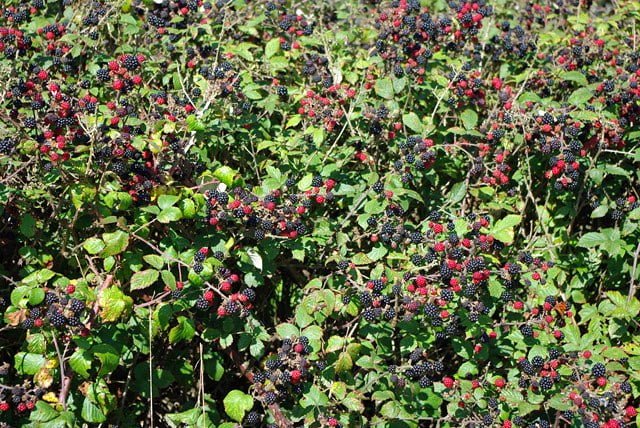
Blackberries are typically planted as dormant bare-root plants in late winter or early spring. Dig a hole that is wide and deep enough to accommodate the root system without crowding or bending the roots. Place the blackberry plant in the hole, spreading out the roots, and back fill with soil, gently firming it around the base. Space multiple plants about 4-6 feet apart in rows that are 8-10 feet apart. Water the plants thoroughly after planting to help them establish their roots.
Watering and Care

Blackberries require regular watering to ensure proper growth and fruit development. Water deeply and consistently, especially during dry spells or hot summer months. Aim to provide about 1 inch of water per week, adjusting based on weather conditions. Mulch around the plants with organic material, such as wood chips or straw, to help retain moisture, suppress weeds, and regulate soil temperature. Avoid overhead watering to minimize the risk of diseases.
Supporting the Plants
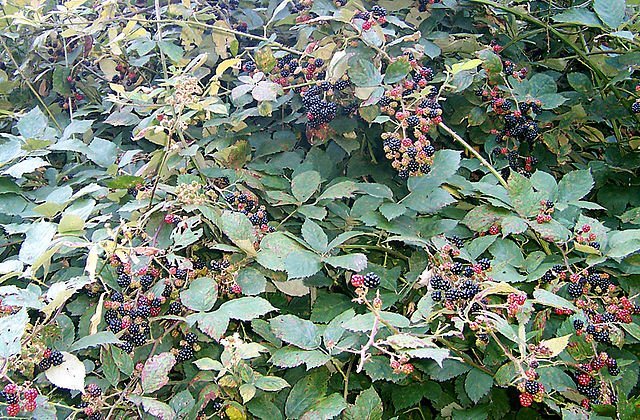
Blackberries are vigorous growers and can benefit from support systems such as trellises or fences. Install a sturdy trellis or use a system of wires to support the blackberry canes as they grow. Prune and train the canes to grow along the trellis, making it easier to harvest the berries and improving airflow around the plants.
Pruning and Maintenance

Pruning is essential for blackberry plants to maintain their vigour and promote fruit production. After the first year of growth, prune the blackberry canes to about 3-4 feet in height to encourage lateral branching. In subsequent years, remove any dead or weak canes and thin out crowded areas to allow for better air circulation and light penetration. Prune the canes after the fruiting season or during late winter before new growth starts.
Pest and Disease Management

Monitor your blackberry plants regularly for pests such as aphids, spider mites, or Japanese beetles. Inspect the plants for signs of diseases like powdery mildew or cane blight. Employ organic pest control methods, such as handpicking insects or using insecticidal soap, if necessary. Proper spacing, good airflow, and removing any diseased canes can help prevent disease issues.
Harvesting and Enjoying
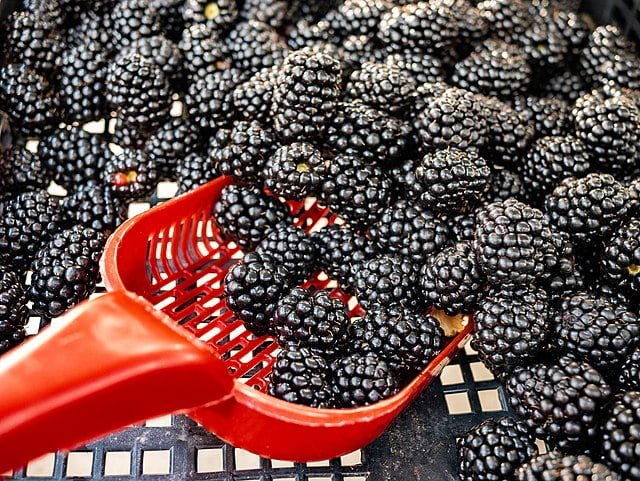
Blackberries are typically ready for harvest in mid to late summer when they turn from red to black and have a shiny appearance. Gently pick the ripe berries, taking care not to crush or damage them. Harvest regularly as the berries ripen, as they become soft quickly. Enjoy the fresh blackberries immediately or use them in jams, pies, or other delightful recipes.
Additional Resources
For those looking to expand their knowledge and expertise in growing blackberries, the following resources provide valuable information, from basic care and cultivation techniques to advanced tips for maximizing yield and dealing with common pests and diseases. These resources are ideal for gardeners of all levels who wish to delve deeper into the art of growing these delicious and nutritious fruits:
- The Old Farmer’s Almanac – Blackberries: A trusted gardening resource that offers a comprehensive guide on how to plant, grow, and harvest blackberries. The Old Farmer’s Almanac provides practical advice on everything from selecting the right varieties for your climate to pruning techniques that ensure bountiful harvests.
- Gardeners’ World – How to Grow Blackberries: This resource offers detailed instructions and expert tips on growing blackberries, including video tutorials and step-by-step guides. Gardeners’ World covers the essentials of care and maintenance, making it a great resource for visual learners seeking to enhance their blackberry cultivation skills.
- Oregon State University Extension Service – Growing Blackberries in Your Home Garden: Given Oregon’s reputation for berry cultivation, this extension service provides an authoritative guide on blackberry gardening. It covers variety selection, soil preparation, planting, training and pruning, pest and disease management, and harvesting. The detailed information is especially useful for those looking to optimize their blackberry yields and health.
These resources can significantly aid in your journey to grow blackberries, offering guidance that spans from initial planting to harvesting. Whether you’re a seasoned gardener or just starting, tapping into the wealth of knowledge provided by these reputable gardening platforms can help ensure your blackberry plants thrive and produce delicious fruits for many seasons to come.
Final Thoughts
Growing blackberries requires patience, as the plants take a year or two to establish and reach their full fruiting potential. By following these simple steps and providing the right growing conditions, you’ll be rewarded with a bountiful harvest of sweet and juicy blackberries to enjoy throughout the summer.

